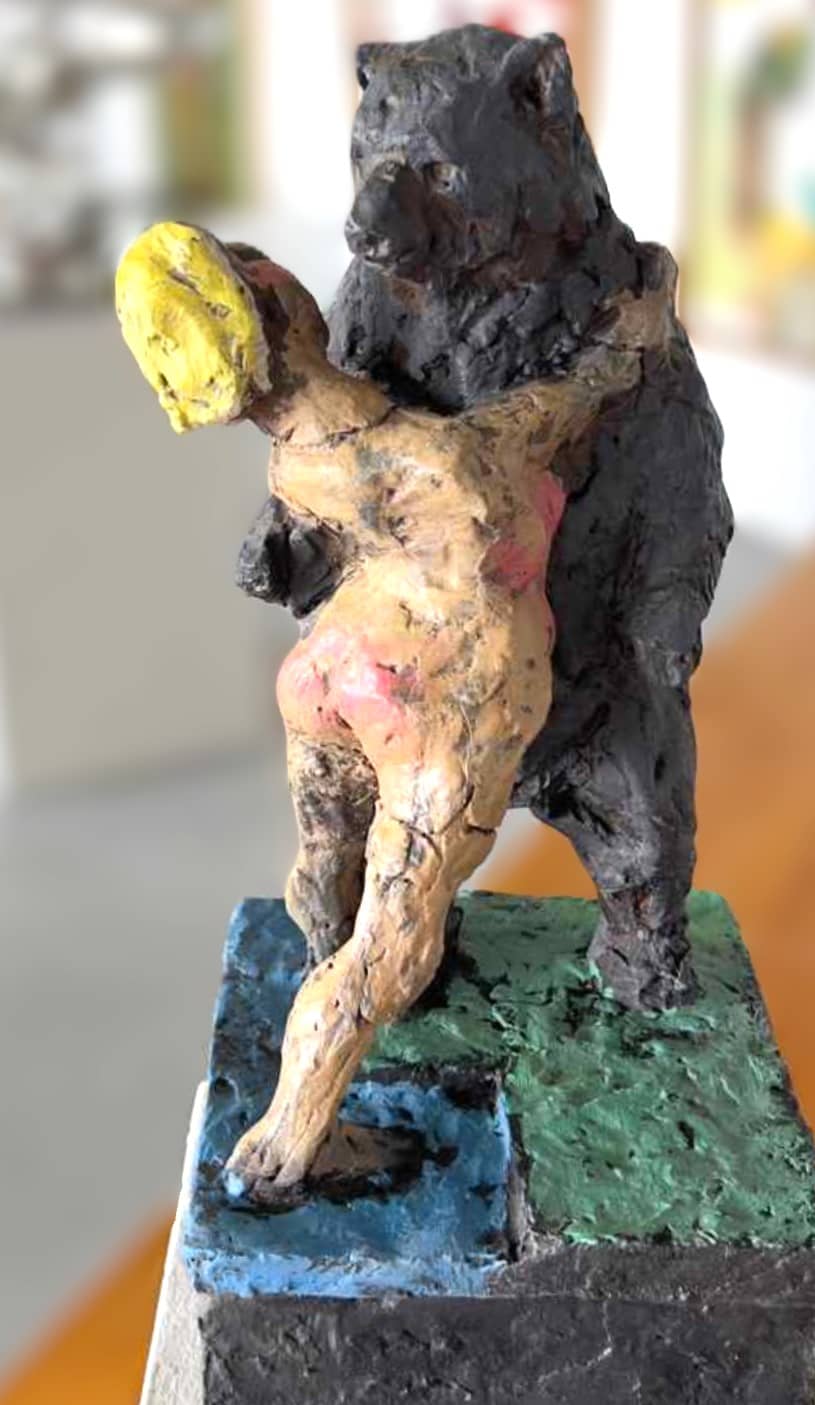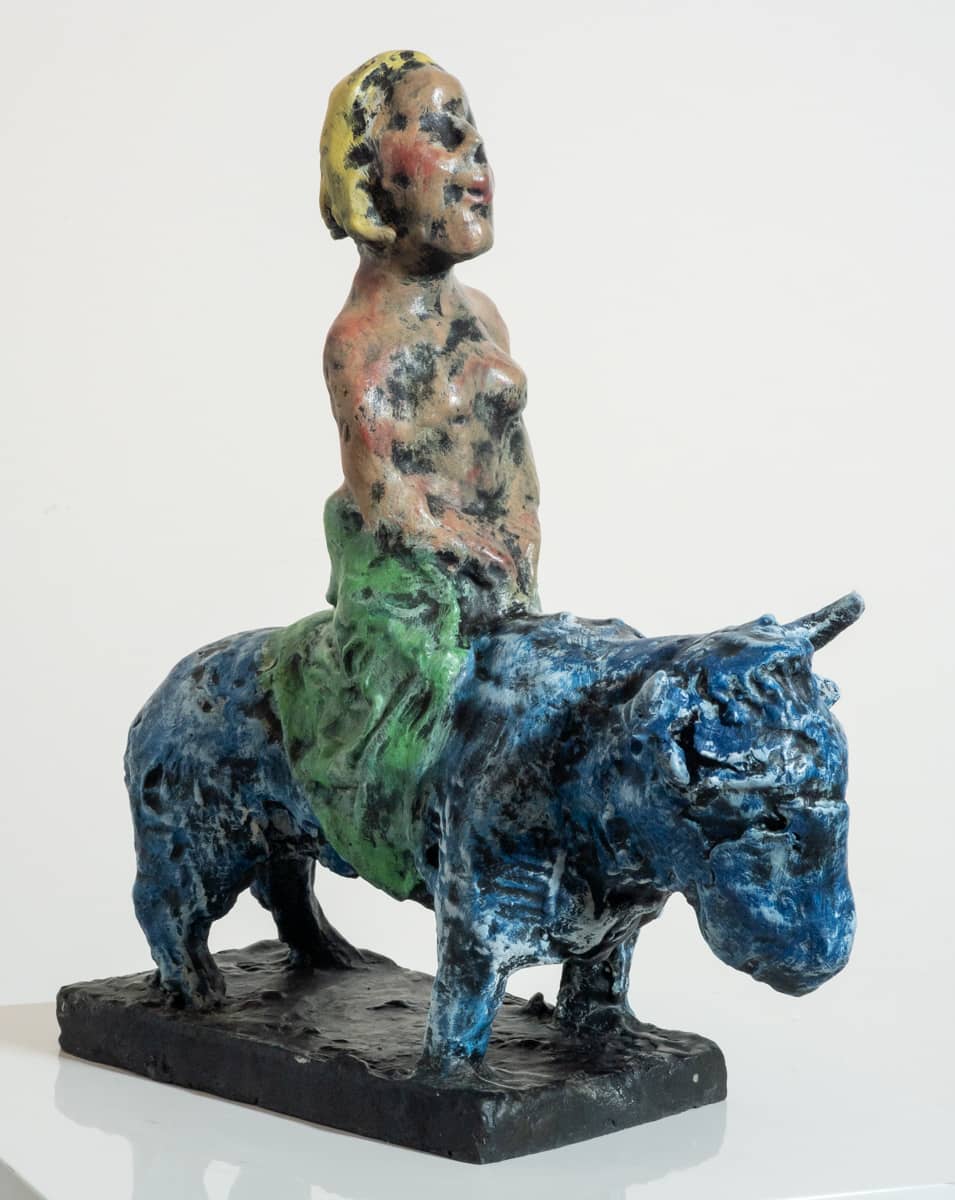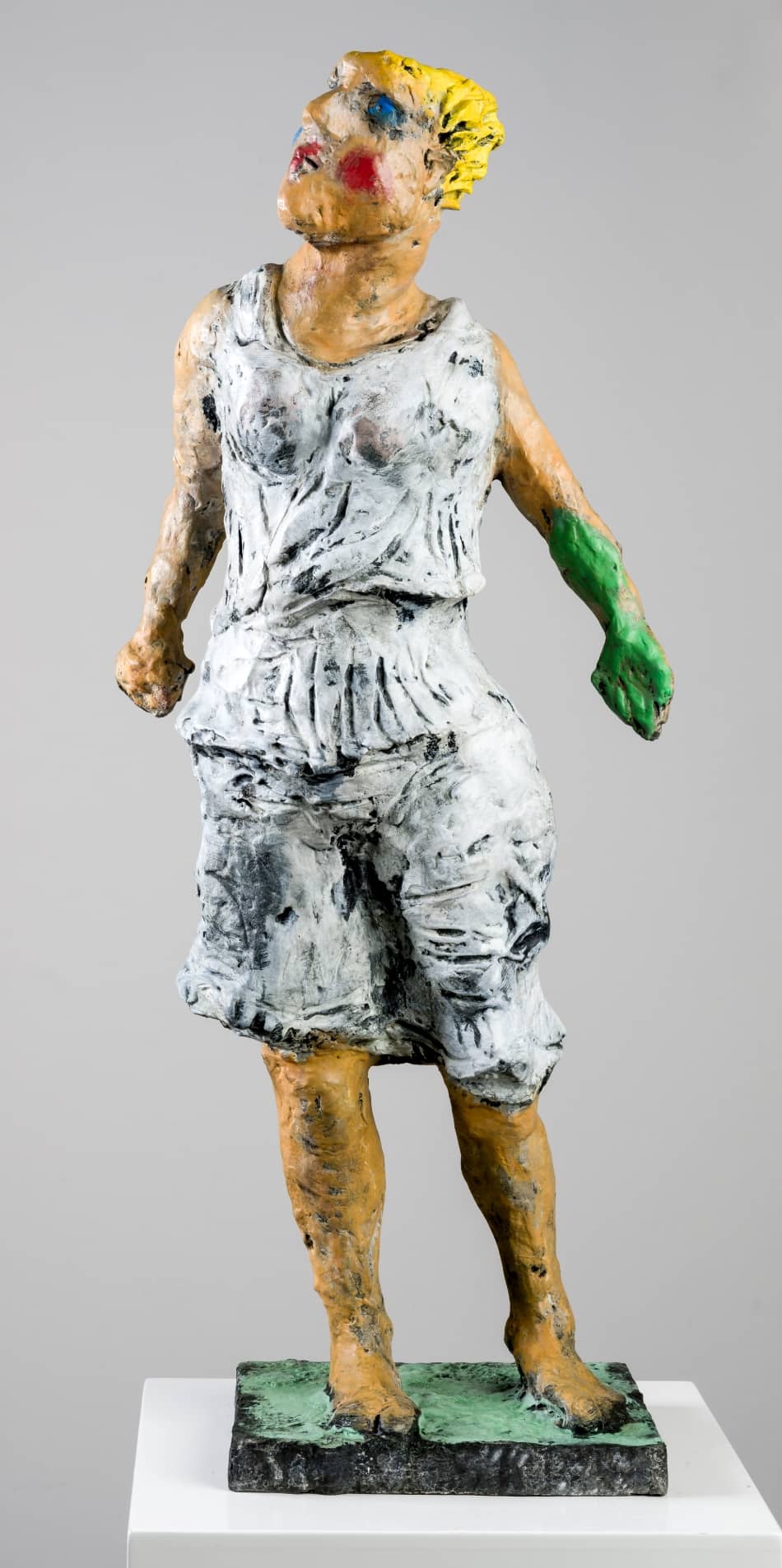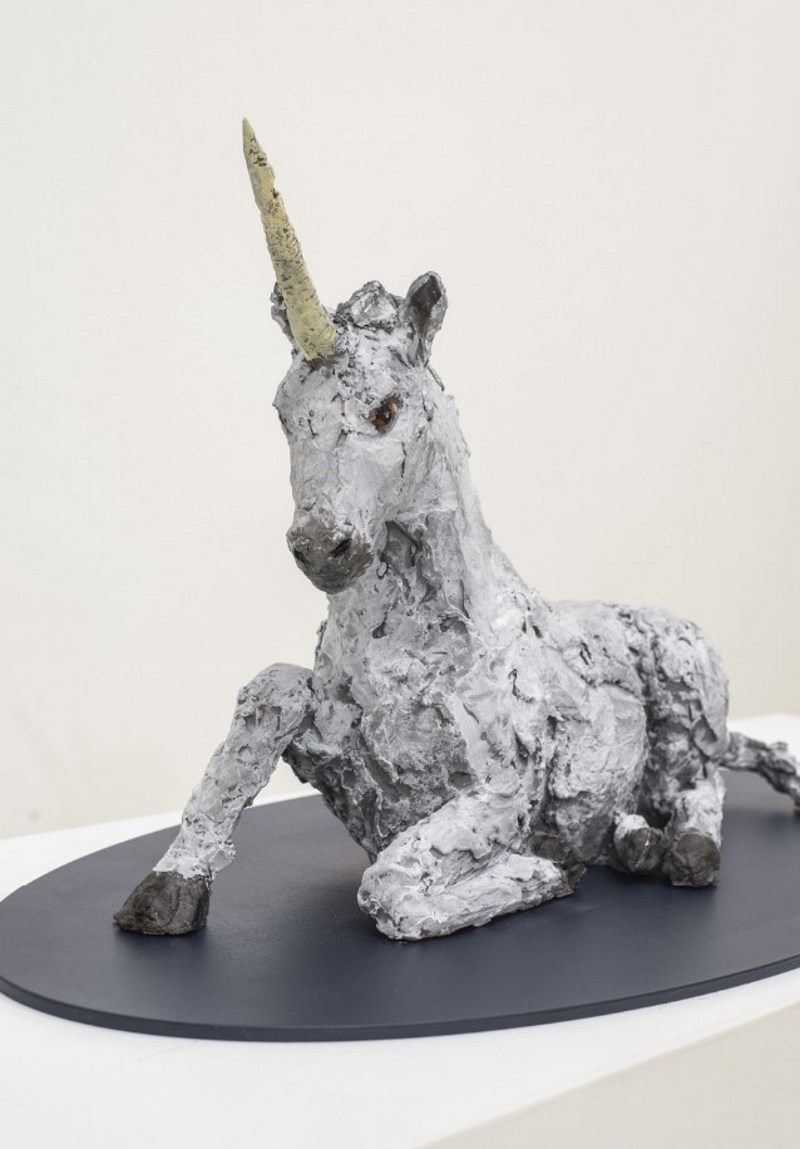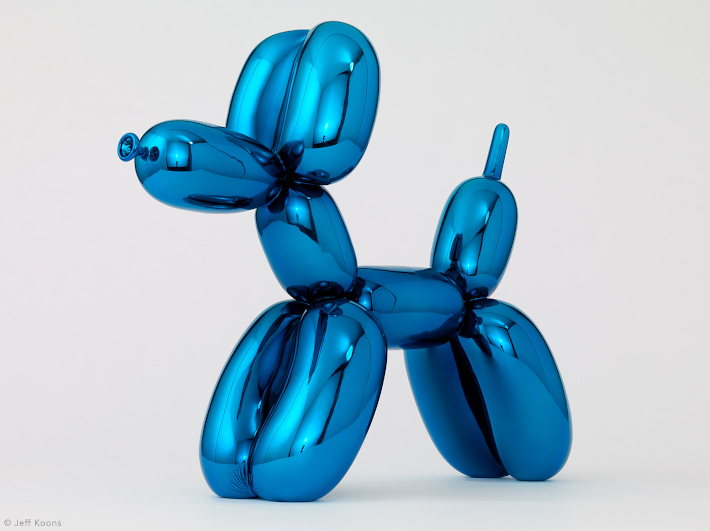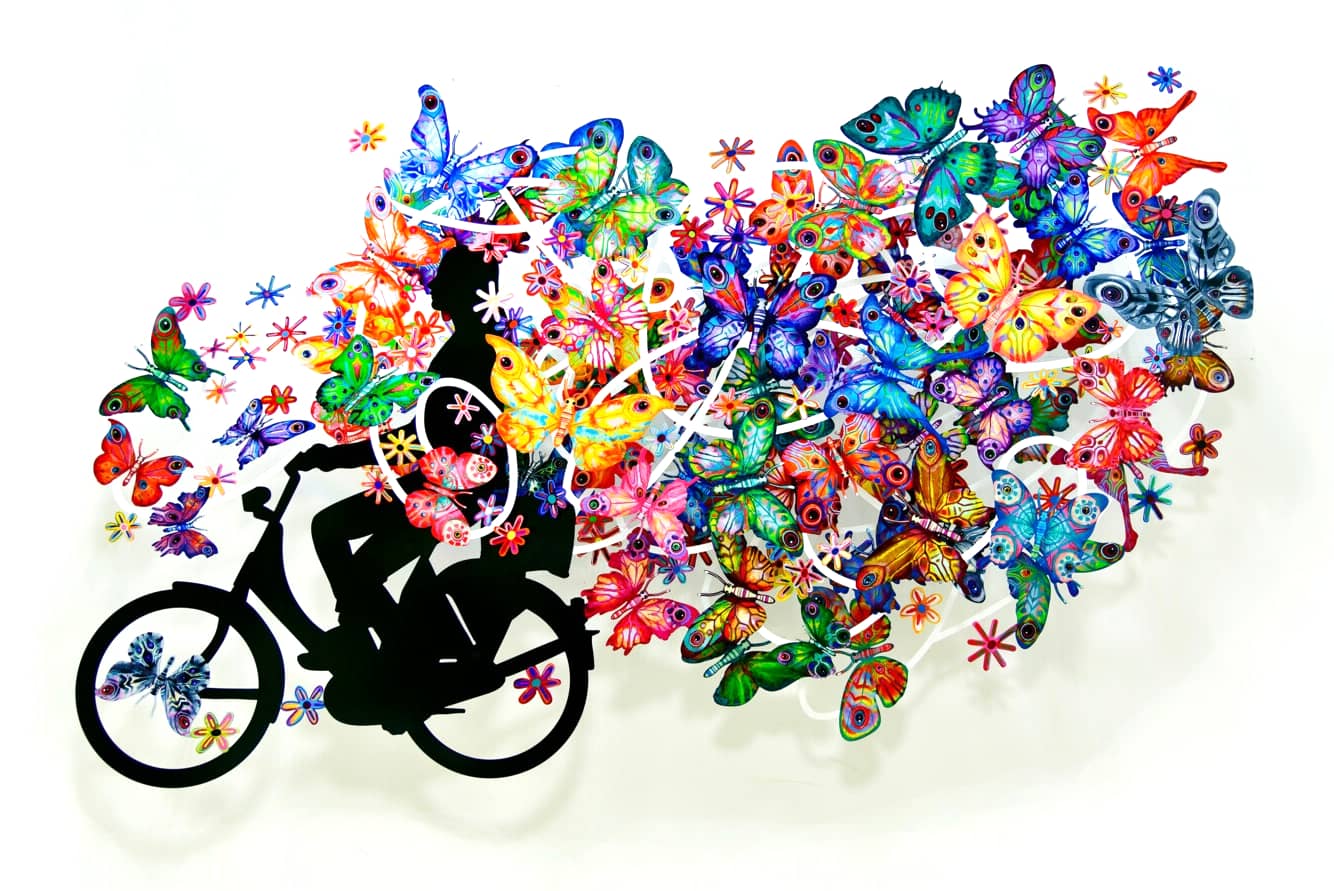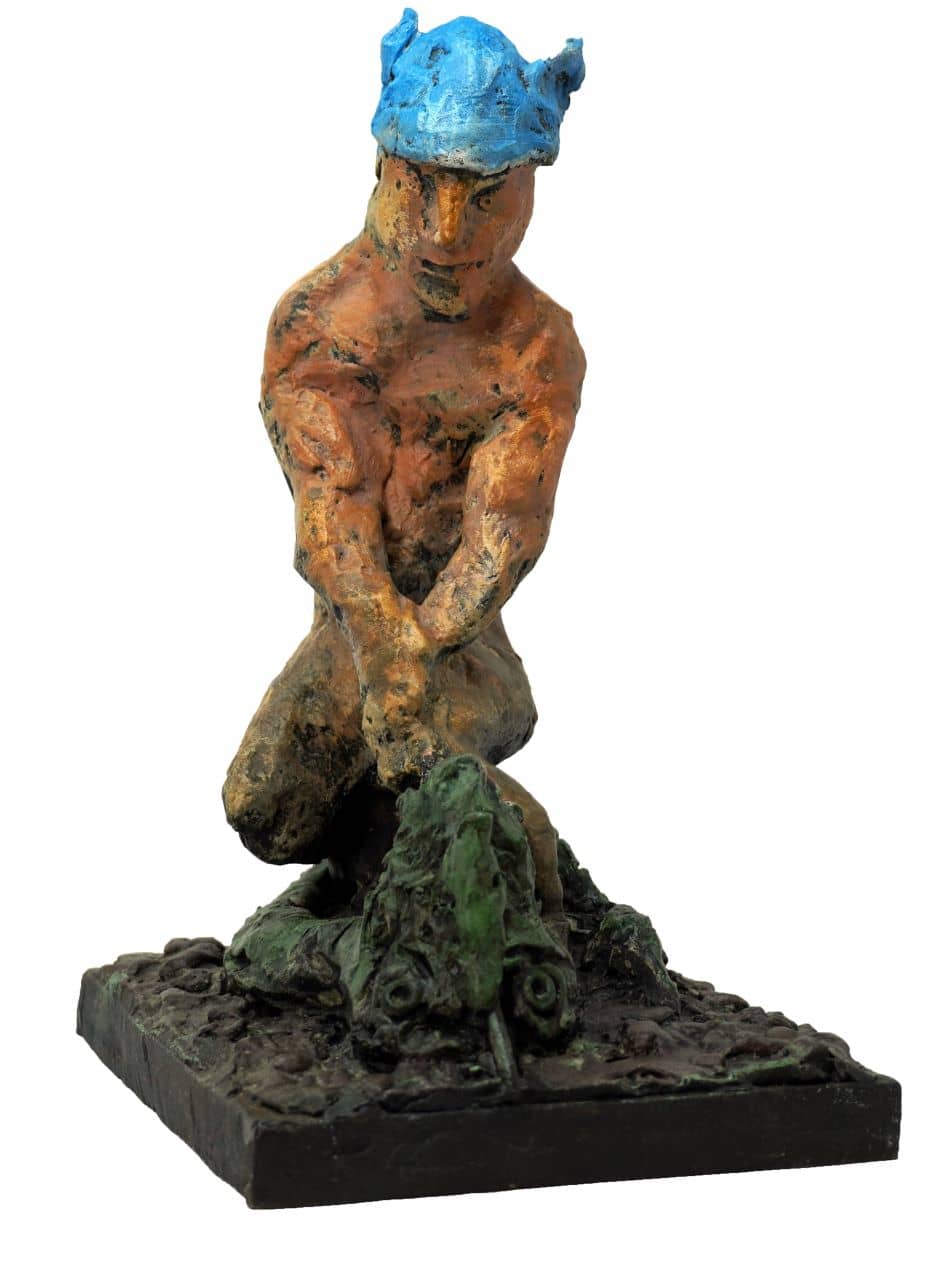
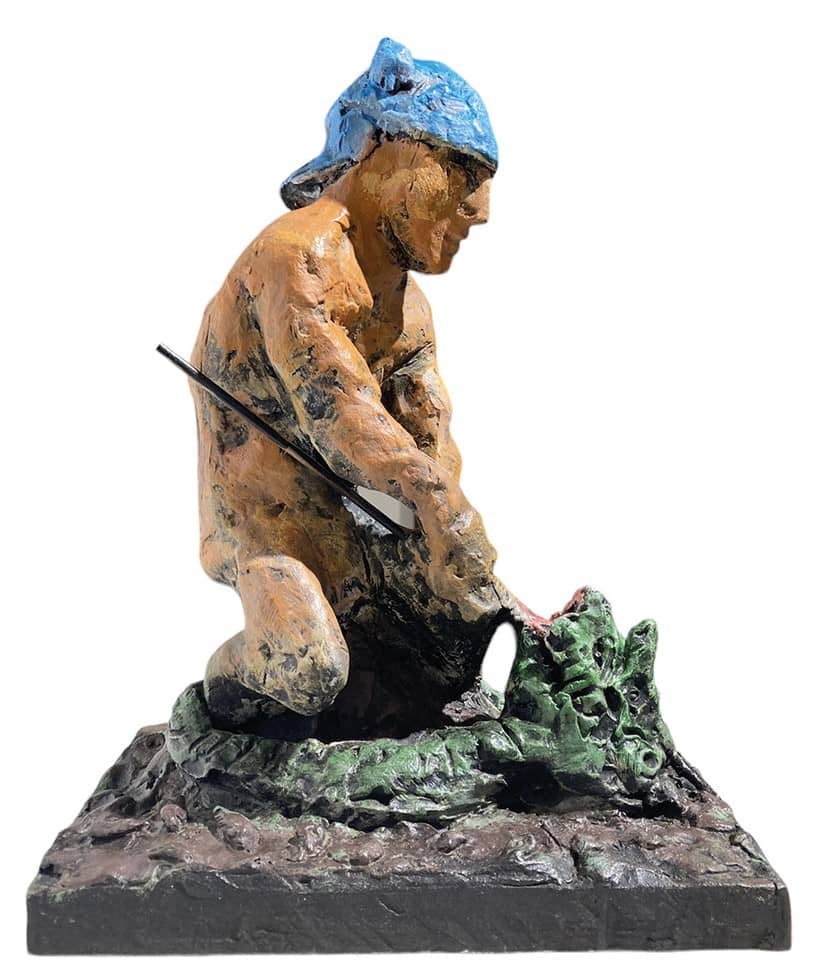
Markus Lüpertz St. Georg / Sculpture / numbered / edition 35
| Year: | 2023 |
| Format: | 31,5 x 16 x 25,5 cm / 12.2 x 6.3 x 9.8 inch |
| Material: | Bronze, hand-painted |
| Method: | Sculpture |
| Edition: | 25 Arabic, 10 Roman |
| Other: | numbered, stamped |
Markus Lüpertz – Saint George with dragon.

| Year: | 2023 |
| Format: | 31,5 x 16 x 25,5 cm / 12.2 x 6.3 x 9.8 inch |
| Material: | Bronze, hand-painted |
| Method: | Sculpture |
| Edition: | 25 Arabic, 10 Roman |
| Other: | numbered, stamped |
Markus Lüpertz - Saint George with dragon.
Saint George with dragon is a bronze sculpture by the German artist Markus Lüpertz. Markus Lüpertz chose the legend of St. George as the subject of a bronze. He is fascinated by the various derivations and interpretations of the life of St. George over the centuries. He was certainly also inspired by the fact that the saint seems to have succeeded time and again over the centuries in making a name for himself in the public eye.
St. George is one of the 14 Christian emergency helpers. The legend is based on his courageous fight against the dragon, through which he defeated evil in the world. Dragon slayer legends can be found in all parts of the world from Asia to Europe and at all times. In Babylonian times, in Greek mythology, in the Bible as well as in the Song of the Nibelungs and even today, the successful fight of good against evil enjoys constant renewal.
The latest versions can now be found in fantasy films and the dragon has a firm place in video game culture. According to legend, he was born to a rich and respected family in Cappadocia and baptized in a monastery there. One tradition names Sebaste in Armenia – today’s Sivas in Turkey – as his birthplace; his mother Polychronia was a Christian and came from Lydda, where the family moved after the death of his father when George was still young.
George joined the Roman army, was decorated for his courage and became a commander. Markus Lüpertz has therefore chosen a mythology that is still relevant today as his model.
We now know that St. George was mentioned as a Christian martyr as early as the third century. In Islam, the figure is known as Cercis, a prophet. A pilgrimage church was erected at his grave in Diospolis (today near Tel Aviv) in late antiquity. Martyr legends tell of a Bishop George of Alexandria who, after countless martyrdoms, was repeatedly brought back to life by the Archangel Michael. In a vision, Jesus himself is said to have predicted that he would be martyred for seven years, dying and rising from the dead three times. On one occasion, 60 nails are said to have been driven into his head at the same time. St. George was first associated with the concept of the dragon slayer during the Crusades in the 12th century. The dragon legend of St. George is similar to various knightly tales. Due to his multiple rebirths – he had previously been quartered – a beautiful George rescues the virgin daughter of the king from the dragon to whom she was to be sacrificed.
However, George only seriously injures the dragon, after which the maiden tames it and leads it into the city at his behest. There, George persuades the king and the people to be baptized and then slays the dragon. After the dragon’s death, the land is freed from evil. In other legends, George escapes from a pot of boiling lead, he survives a beating, a crucifixion with 60 nails and a poisonous potion leads to the death of the sorcerer but not to George’s end.
What all myths and stories have in common is that George suffered cruel martyrdoms and only survived the ordeal thanks to his strong faith. At the time of the Crusaders, George became a battle helper when he appeared in white armor to the Crusaders outside Jerusalem: sent back to earth by God, he helped them defeat the Saracens and conquer Jerusalem. This story naturally found a receptive audience in the Middle Ages and was therefore often adapted into songs and legends.
As a result, St. George became the patron saint of knights and men of war, and to this day numerous orders of knights bear his name.
Markus Lüpertz, who has always dealt with figures from mythology in his artistic work, adds a remarkable bronze to his oeuvre with St. George. Overall, the connection between Markus Lüpertz and mythology shows how these ancient stories and symbols can continue to play an important role in contemporary art. His sculptures are always a reflection on the timeless relevance of mythology and its importance in understanding human existence.



Year: 2023
Format: 31,5 x 16 x 25,5 cm / 12.2 x 6.3 x 9.8 inch
Material:Bronze, hand-painted
Method:Sculpture
Edition:25 Arabic, 10 Roman
Other:numbered, stamped


